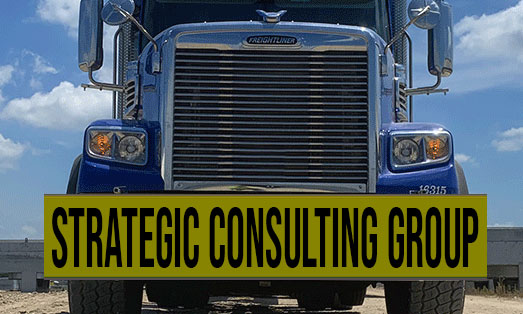Risk Mitigation: Implementing strategies to minimize project risks. near Summit County
Get Risk Mitigation: Implementing strategies to minimize project risks. in Summit County, read on…
Mastering Risk Mitigation: A Comprehensive Guide
Every project, regardless of its size or complexity, carries inherent risks. But fear not! By implementing effective risk mitigation strategies, you can navigate these challenges and ensure your project’s success.
Understanding Risk Mitigation
Risk mitigation involves proactively identifying, assessing, and addressing potential threats to your project. This proactive approach helps you avoid surprises and minimize the impact of unforeseen circumstances.
Key Steps to Implement Risk Mitigation Strategies
- Identify Potential Risks: Begin by brainstorming a comprehensive list of possible risks. Consider factors like deadlines, resources, technology, weather, and external dependencies.
- Assess Risk Impact: For each identified risk, determine its likelihood of occurrence and the potential impact on your project’s goals, budget, and timeline. Prioritize the most critical risks.
- Develop Mitigation Strategies: Brainstorm creative solutions for each risk. These strategies should aim to reduce the likelihood of the risk occurring or minimize its impact if it does happen.
- Implement and Monitor: Put your mitigation strategies into action and monitor their effectiveness. Regularly review and adjust your strategies as needed.
Examples of Risk Mitigation Strategies
Here are some real-world examples of risk mitigation strategies across various industries:
- Construction Projects:
- Risk: Equipment malfunction delaying construction.
- Mitigation: Secure backup equipment or have a rental agreement in place.
- Software Development:
- Risk: Bug discovery during testing impacting launch date.
- Mitigation: Implement rigorous testing protocols, schedule contingency time for bug fixes, and have a contingency plan for major delays.
- Event Management:
- Risk: Low attendance affecting revenue.
- Mitigation: Implement an aggressive marketing campaign, offer early bird discounts, and provide incentives for group bookings.
- Financial Investments:
- Risk: Market volatility causing portfolio losses.
- Mitigation: Diversify investments across different asset classes and adopt a long-term investment strategy.
Risk Mitigation in the Real World
Risk mitigation is a fundamental practice in numerous industries, from construction and finance to healthcare and technology. It’s essential for:
- Project Success: By proactively addressing potential challenges, you increase the likelihood of achieving your project’s goals.
- Cost Savings: Preventing risks can save you significant time and money by avoiding costly delays and rework.
- Reputation Management: Successfully mitigating risks demonstrates your professionalism and competency to stakeholders.
Conclusion:
Mastering risk mitigation is crucial for any project, regardless of its size or complexity. By following the steps outlined above and implementing appropriate strategies, you can navigate challenges, minimize surprises, and ultimately achieve your project goals with greater confidence.
Want to Make Your Projects a Breeze? Learn About Risk Mitigation!
TL;DR – Too Long; Didn’t Read
Risk mitigation is like wearing a helmet when you ride your bike. It helps protect you from getting hurt. In projects, risks are things that could go wrong and cause problems. Risk mitigation is about figuring out how to prevent those problems or make them less serious. This article will help you understand how to manage risk in your projects, especially if you’re working on something big and important.
What is Risk Mitigation?
Imagine you’re building a sandcastle on the beach. The waves could wash it away, the wind could blow it down, or someone could accidentally step on it. These are all risks to your sandcastle project!
Risk mitigation is about thinking ahead and coming up with ways to deal with these risks. You could build your sandcastle higher up on the beach, use stronger sand, or put a fence around it. These are all risk mitigation strategies.
Why is Risk Mitigation Important?
When you’re working on a project, especially a big one, it’s really important to think about risks. If you don’t, you could run into problems that slow you down, cost you more money, or even make you have to start all over again!
Risk mitigation helps you:
- Save time and money by preventing problems before they happen.
- Make sure your project stays on track and meets its goals.
- Keep your team happy and productive by knowing how to handle unexpected challenges.
Steps to Implement Risk Mitigation Strategies
There are a few steps to follow when you’re trying to minimize risk in your projects.
1. Identify the Risks
First, you need to figure out what could go wrong. Think about your project and ask yourself questions like:
- What could happen that would delay the project?
- What could cause the project to go over budget?
- What could prevent us from achieving our goals?
2. Assess the Risks
Once you’ve identified your risks, you need to figure out how serious they are. Ask yourself questions like:
- How likely is this risk to happen?
- How much damage could this risk cause?
3. Develop Mitigation Strategies
Now it’s time to come up with plans to deal with your risks. For each risk, think about:
- How can we prevent this risk from happening?
- How can we reduce the impact of this risk if it does happen?
- What resources do we need to implement this strategy?
4. Implement and Monitor
Put your mitigation strategies into action! As you work on your project, keep an eye on the risks. Make sure your plans are working and be ready to adjust them as needed.
Examples of Risk Mitigation Strategies
Here are some examples of how you can mitigate risks in your projects:
- Use a backup plan: If there’s a risk that a key piece of equipment might break down, have a backup plan in place so you can keep working.
- Get extra training: If there’s a risk that your team might not have the skills they need, provide them with extra training or hire someone who does.
- Set clear deadlines: Having clear deadlines can help keep everyone on track and prevent delays.
- Build in extra time: If there’s a risk that something might take longer than expected, build in some extra time in your project schedule.
- Set a budget and stick to it: A clear budget can help prevent the project from going over budget.
Risk Mitigation in the Real World
Risk mitigation is used in all sorts of projects, from building houses to launching rockets to organizing events. It’s a crucial part of making sure that projects are successful!
Example of Risk Mitigation in Action
Let’s say you’re organizing a school dance. You’ve identified a few risks:
- Risk: Not enough people might sign up for the dance.
- Mitigation Strategy: Promote the dance widely, offer discounts for early bird tickets, and hold a contest to increase excitement.
- Risk: The music system might malfunction.
- Mitigation Strategy: Have a backup music system available and make sure your DJ knows how to use both systems.
- Risk: The dance floor might be crowded.
- Mitigation Strategy: Set up a second dance floor, hire extra security to help manage crowds, and enforce a no-outside food or drink policy.
Expansive Summary
Risk mitigation is a valuable tool for making your projects a success! By thinking ahead and putting plans in place to handle potential problems, you can save time, money, and frustration. By identifying risks, assessing their impact, developing mitigation strategies, and implementing and monitoring those strategies, you can effectively manage risk and ensure your project stays on track. Remember, the key to successful risk mitigation is being proactive, prepared, and adaptable!
More on Risk Mitigation: Implementing strategies to minimize project risks.…
- ## SEO Keywords: Risk Mitigation & Execute Phase Services
- General Risk Mitigation Keywords:
- Risk mitigation strategies
- Project risk management
- Minimize project risks
- Risk assessment and mitigation
- Risk analysis and management
- Risk identification and control
- Risk mitigation planning
- Effective risk management
- Project risk mitigation tools
- Risk mitigation techniques
- Risk mitigation plan template
- Risk mitigation for projects
- Risk management software
- Risk register template
- Risk management process
- Risk mitigation checklist
- Execute Phase Services Keywords:
- Project execution services
- Project management consulting
- Project implementation services
- Project execution planning
- Project delivery services
- Execution phase management
- Project rollout services
- Post-implementation support
- Project handover services
- Project closeout services
- Project lifecycle management
- Combined Keywords:
- Risk mitigation in project execution
- Execute phase risk management
- Risk mitigation for project implementation
- Project risk mitigation strategies in the execution phase
- Risk management services for project execution
- Implementing risk mitigation during project execution
- Execute phase risk assessment and mitigation
- Risk control in project execution
- Project execution risk mitigation plan
- Project execution risk management software
- Risk mitigation for project rollout
- Project execution risk mitigation training
- Risk mitigation for project delivery
- Execute phase risk management consulting
- Long-Tail Keywords:
- How to mitigate risks in project execution
- Best practices for risk mitigation in the execute phase
- Project execution risk mitigation plan template
- Software for risk mitigation during project execution
- Risk management strategies for successful project execution
- Execute phase risk mitigation checklist
- Project execution risk management consulting services near me
- The importance of risk mitigation in project delivery
- Risk mitigation for complex project execution
- Best tools for managing risks in the execute phase of a project
- Additional Keywords:
- Project risk mitigation training
- Risk mitigation for agile projects
- Risk mitigation for IT projects
- Risk mitigation for construction projects
- Risk mitigation for software development projects
- Risk mitigation for healthcare projects
- Risk mitigation for manufacturing projects
- This list is not exhaustive, but it provides a good starting point for SEO keyword research. You can use these keywords to optimize your website content, blog posts, and social media posts. You can also use keyword research tools to find more specific and relevant keywords.


